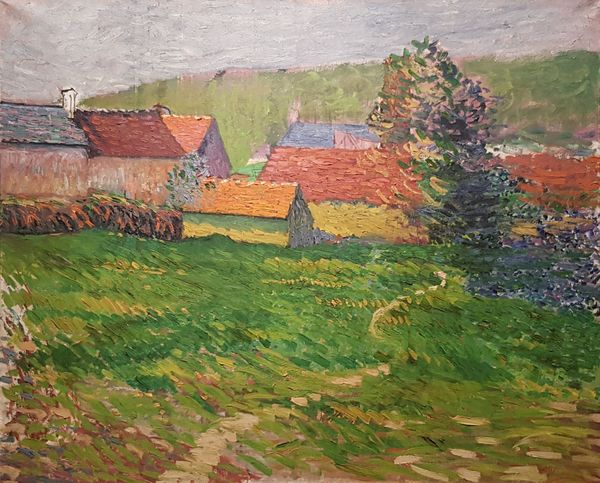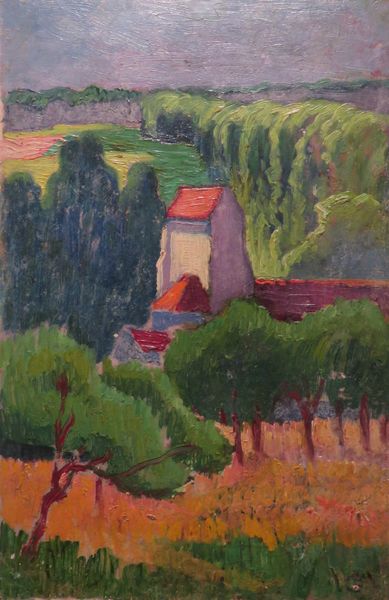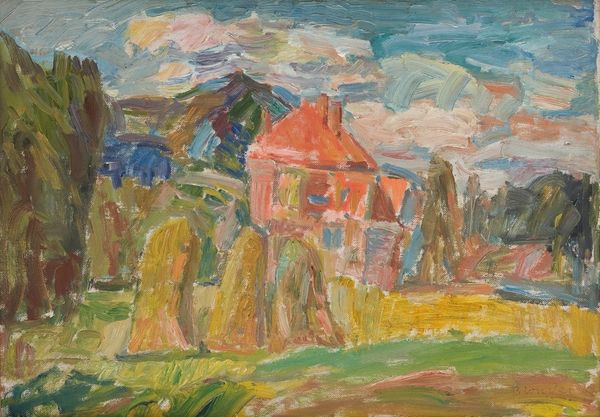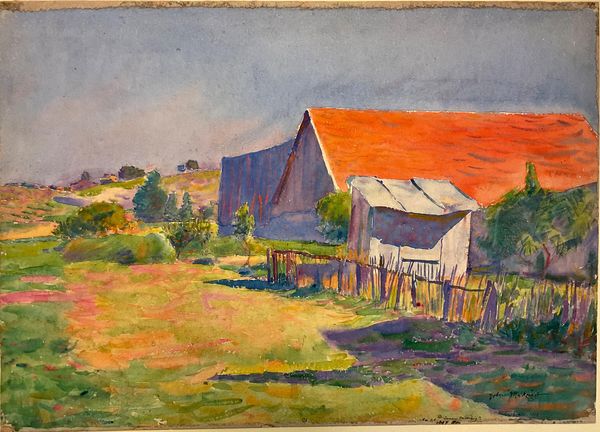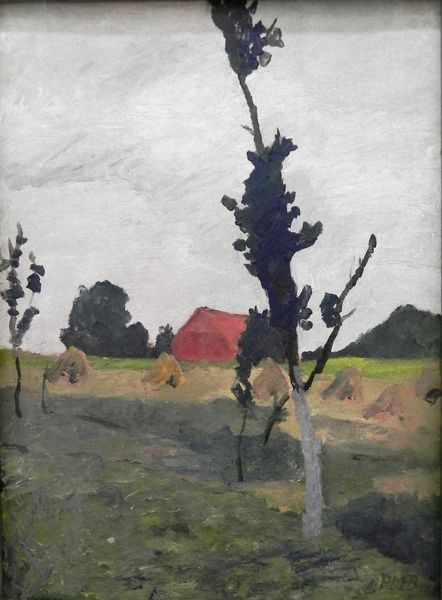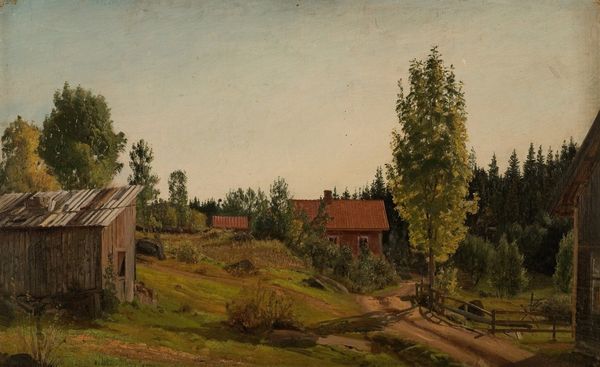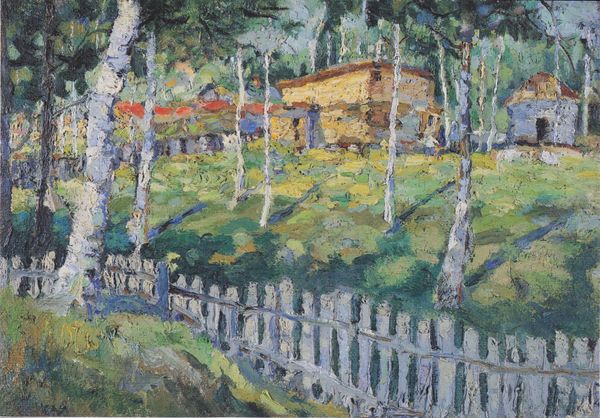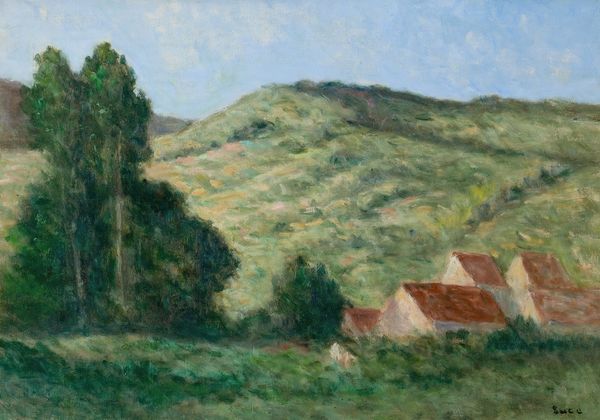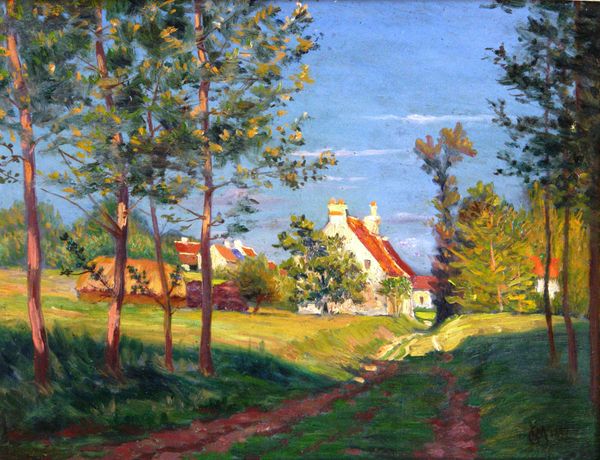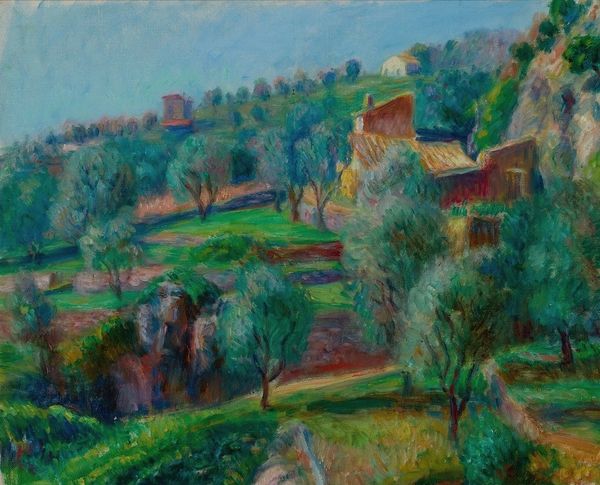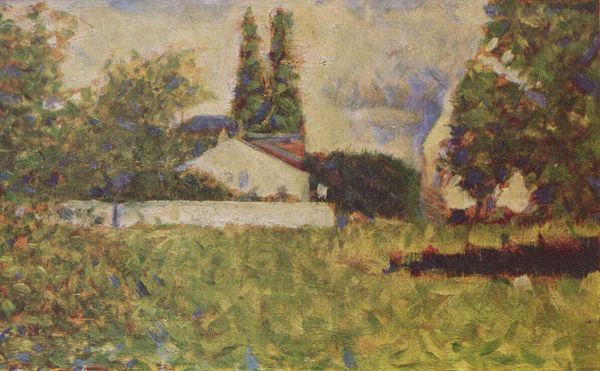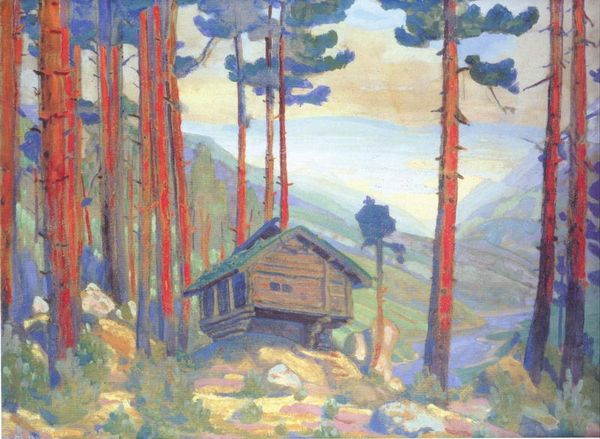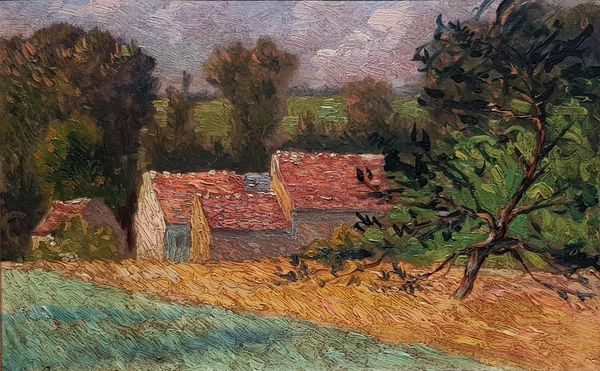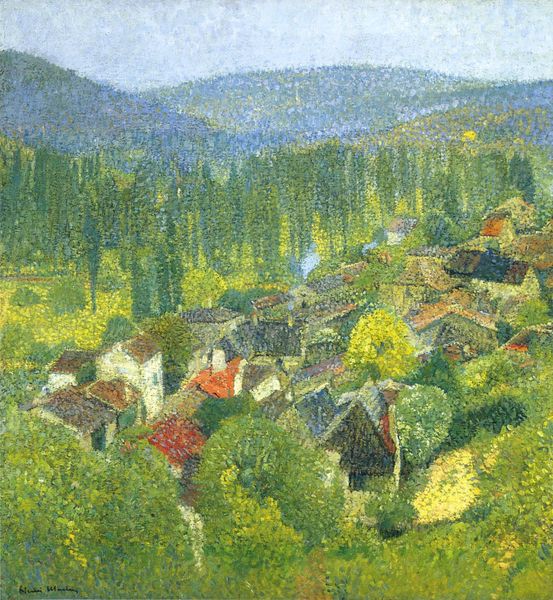
Copyright: Public domain
Editor: This is Alfred William Finch's "Landscape from Padasjoki," painted in 1917 using oil paints. The texture looks quite thick. It almost vibrates with all those bright colors. What do you see in this piece? Curator: Observe how Finch employs impasto techniques, building layers of paint to create a tactile surface. Note the division of space and how he juxtaposes foreground and background. Is there a coherent composition or a more fractured, deconstructed pictorial space? Editor: It seems balanced, but the brushstrokes feel really free, almost chaotic in places, especially in the trees. It's not a smooth blend of colors. Curator: Precisely. Consider how the visible brushstrokes articulate form and texture, departing from traditional modeling. The vibrant color palette serves not to replicate nature, but to create a visual rhythm, an interplay of tones. Do these color relationships adhere to conventional landscape painting, or do they disrupt established norms? Editor: They're definitely amplified. The reds of the buildings against the greens of the landscape – it's not subtle. It pushes beyond realism, almost into abstraction. Curator: Good. Notice the flatness of the picture plane. Finch isn't really creating deep space in the Renaissance sense; rather he's calling attention to the painted surface itself. How do we reconcile this with his apparent desire to capture the landscape? Editor: So he’s showing us the process of painting as much as the place itself? It’s a very self-aware landscape. Curator: Precisely. He reveals the underlying structure, challenging our perception of landscape as a straightforward representation of reality. It highlights the artistic choices and techniques inherent in constructing any image. Editor: I hadn’t considered how the visible brushstrokes and color choices directly question our expectations of landscape paintings. Curator: It underscores the active role of the artist, reshaping how we perceive both the artwork and the world it represents.
Comments
No comments
Be the first to comment and join the conversation on the ultimate creative platform.
